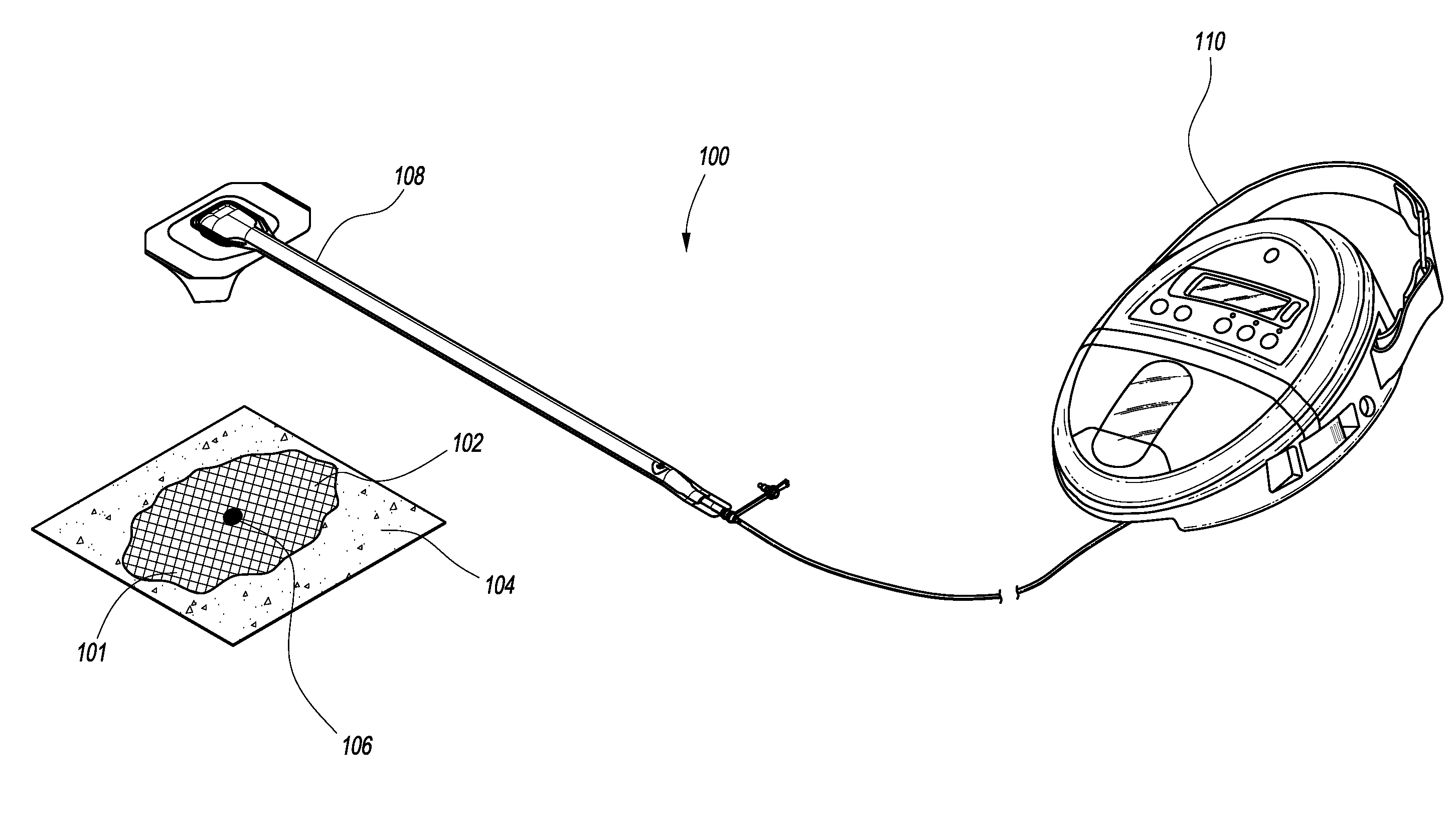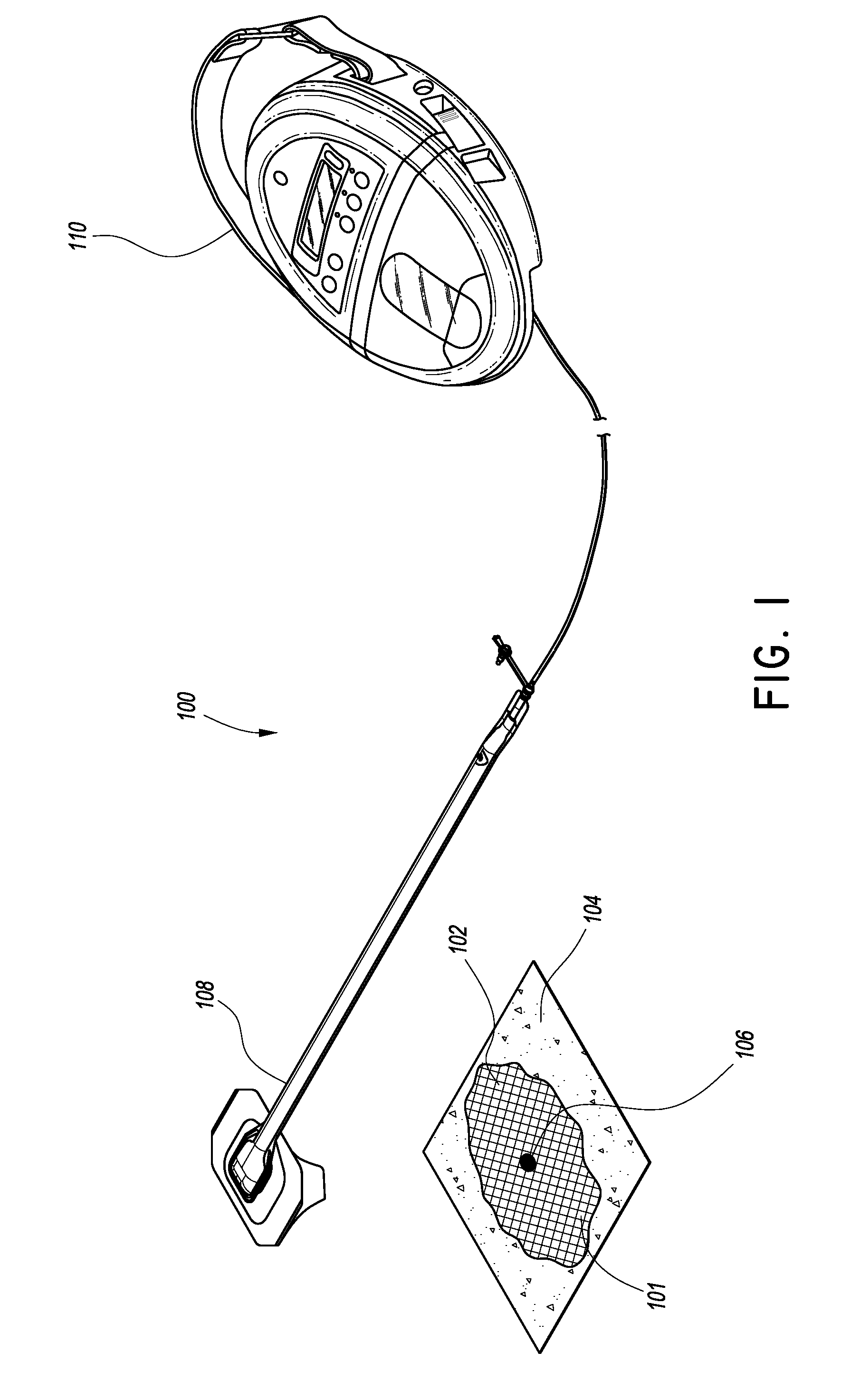Negative pressure wound closure device
a wound closure and negative pressure technology, applied in the field of negative pressure wound closure devices, can solve the problems of long closure time, unadjustable re-proximation of underlying muscular and tissue fascial tissue, and the dehiscence of existing wounds, so as to facilitate the closure of wounds, reduce the need for repetitive replacement, and advance the healing rate
- Summary
- Abstract
- Description
- Claims
- Application Information
AI Technical Summary
Benefits of technology
Problems solved by technology
Method used
Image
Examples
example 1
[0086]By means of a non-limiting example, an experiment was conducted to determine the effectiveness of an embodiment of the wound closure devices described above, with testing being performed on a cadaveric model. A midline incision was made through the peritoneum and into the abdominal cavity of the cadaver, which was then filled with two saline bags with a total capacity of approximately 2 L so as to provide upward tension to simulate the effects of abdominal edema and organ swelling that may be seen, for example, in abdominal compartment syndrome. These bags, together with the intestines, were placed into the wound cavity underneath an organ protection layer, as provided in the Renasys® A / B treatment kit (Smith & Nephew).
[0087]With reference to FIG. 2A, a piece of black foam was inserted into the abdominal incision, sealed with a drape, and connected to a source of negative pressure via a fluidic connection (here, a Soft Port™ suction port assembly manufactured by Smith & Nephew...
example 2
[0096]By means of a non-limiting example, an experiment was conducted to determine the effectiveness of an embodiment of the wound closure devices described above, with testing being performed on a cadaveric model. FIGS. 5A-B illustrate the results where a structure with foam, similar to the embodiments of FIGS. 4A-E, was placed into a wound. The perimeter of the structure was wrapped in a layer of foam.
[0097]Wound area measurements before and after application of negative pressure indicated that the wound area decreased by 64%, from 152 mm2 to 55 mm2.
example 3
[0098]This non-limiting experiment tested a structure wrapped in foam and prestretched along its width and held in place by bendable plastic strips, but otherwise similar to the embodiments of FIGS. 4A-E. FIGS. 6A-B illustrate the wound size before and after application of negative pressure. Here, the wound area measured 154 mm2 before the application of negative pressure, and 101 mm2 afterwards, for a 34% reduction in wound area.
PUM
 Login to View More
Login to View More Abstract
Description
Claims
Application Information
 Login to View More
Login to View More - R&D
- Intellectual Property
- Life Sciences
- Materials
- Tech Scout
- Unparalleled Data Quality
- Higher Quality Content
- 60% Fewer Hallucinations
Browse by: Latest US Patents, China's latest patents, Technical Efficacy Thesaurus, Application Domain, Technology Topic, Popular Technical Reports.
© 2025 PatSnap. All rights reserved.Legal|Privacy policy|Modern Slavery Act Transparency Statement|Sitemap|About US| Contact US: help@patsnap.com



